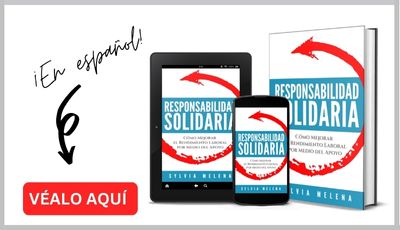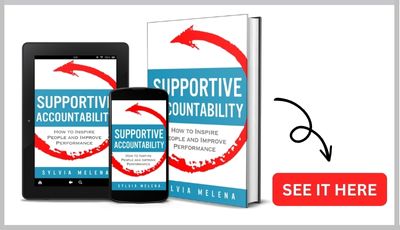¿Quiere leer este artículo en español? Haga clic aquí.
Let’s face it. Employees are burned out.
You have a lot more to get done with fewer resources, and you care about people.
Here’s the good news. There are 7 things that you can do to revive the workplace and boost performance.
Stress and Burnout are Ravaging the Workplace
According to the American Institute of Workplace Stress, the workplace is the greatest source of stress for adults in the U.S., and this stress has been increasing in the past few decades. Employees feel job demands and little control over their work are major contributors.1
And in May 2019, the World Health Organization (WHO) made an unprecedented move to recognize burnout as a medical condition, and people are taking notice.
In her Quartz at Work article, Cassie Werber reported on the WHO’s inclusion of burnout in its International Statistical Classification of Diseases and Related Health Problems.2 And more articles are coming out.
Werber underscored that “burnout isn’t simply a synonym for stress, the (WHO’s) definition suggests it’s the result of deep, long-term stress that hasn’t been dealt with, either by the sufferer or the employer.”3
What Can Organizations Do?
Create an emotionally supportive environment that gives employees the resilience to handle the challenges.
Sylvia Melena
While organizations don’t have control over their employees’ lifestyle choices, they can engage in health promoting-leadership and advance health-promoting workplaces.
Health-promoting leaders intentionally change the working conditions of their organization, division, section, or office to promote employee health, safety, and well-being. They advance healthy policies, practices, and procedures, which increase the level of employee support and reduce workplace stress.4
The Far-Reaching Benefits of Healthy Workplaces
When employees work in safe, healthy, and vibrant environments, they can give their best and deliver strong performance. This helps organizations achieve their mission and strengthen their bottom line.
But the positive impact of health-promoting leadership transcends
Employees who thrive at work are empowered to be much better parents, spouses, friends, and citizens because their cups are full and can overflow to others.
This strengthens communities and makes them much more resilient.
When organizations build health-promoting workplaces, they make positive contributions to society.
7 Tips for Building a Health-Promoting Workplace
Jiménez, Winkler, and Bregenzer identified seven workplace factors that impact employee health—workload, control, rewards, community, fairness, value-fit, and health awarenes.5
Here are 7 tips on how to influence these factors to create a healthy workplace and fight employee burnout.
Tip 1 – Assign a reasonable workload.
Excessive workload without adequate resources contributes to employee burnout and stress, which in turn lead to health-related issues.6
When times are lean and resources are at a premium, it’s easy to overburden employees with excessive work. However, there are other solutions to optimize resources. These include enhanced automation, leaner processes, better equipment, and other enhancements.
Yes, these measures require upfront costs, but the return on investment is tangible and easily calculated. Most importantly, the human benefits are priceless.
It’s perfectly acceptable and expected to increase the workload when it’s reasonable and sustainable. Health-promoting leaders do their research and crunch the numbers to determine the appropriate amount of work.
Tip 2 – Give employees control over their work.
This type of autonomy is associated with health-related benefits.7
We need to let go and let employees do their jobs in a way that works for them. Focusing on results rather than process is easier said than done. I can attest to that myself.
But letting go is not only good for employees, but for managers too because it frees them to focus on the bigger picture.
Tip 3 – Appreciate and recognize employees for their contributions.
Jiménez et al. wrote that employees who don’t receive recognition and appreciation from their leaders are at a higher risk of burnout.”8 The researchers specifically focused on rewards that flow from leader to employee.
However, to significantly ramp up appreciation, build a culture where gratitude is freely and frequently expressed at all levels. It’s not just top-down appreciation that matters. It’s bottom-up, side-to-side, and across organizational boundaries.
When gratefulness is ingrained in the culture, the opportunities to receive the extra boost that comes from it multiplies exponentially.
Tip 4 – Promote positive working relationships.
Positive interactions with other people in the workplace help prevent exhaustion, whereas negative ones can be detrimental to health outcomes.9
Health-promoting leaders have healthy relationships with other people in the workplace. They encourage healthy team disagreement and debate within the context of mutual support and respect.
They empower people to challenge their thinking, because they know it leads to stronger outcomes. They’re secure enough to handle the challenge and to admit they don’t have all the answers.
Tip 5 – Maintain workplace fairness.
The perception of workplace unfairness can contribute to employee exhaustion and cynicism, which increases the risk of burnout.10
Health-promoting leaders actively ensure fairness and consistency in the way they treat employees, the way they make decisions that impact people, and the way they allocate benefits and resources.
Tip 6 – Help employees understand the organization’s values .
Employees need alignment between their values and their work. Incongruence between the two increases the chances of employee burnout. Jiménez et al. encourage leaders to promote value alignment “by trying to match employees’ daily activities and career interests with the company’s objectives.”11
This is certainly a tactic that can be employed. But what happens when ideologies are misaligned?
While managers can’t necessarily change deep-rooted employee principles, they can provide clarity about the organization’s priorities. It’s best to communicate organizational philosophy during the hiring process so that people can determine whether or not they can and will embrace it.
However, even if you miss the mark at hiring, you can reinforce organizational priorities at new employee onboarding and throughout the employee’s tenure. The organization’s mission, vision, and values must be top of mind at all times, not just for executives and managers, but for everyone in the organization.
Tip 7 – Raise employee health awareness.
Employee health awareness exists when employees know about the essential factors that affect their health. And this awareness is directly related to employee health outcomes.12
Health-promoting leaders provide consistent messaging to their staff about what they can do to promote better personal health.13
This messaging is not just verbal or written. The best way to communicate the value of healthy behaviors is by example.
Leaders who prioritize their health are positive role models for their staff and are more successful at raising health awareness.14 Their commitment to personal health also inspires action.
My Confession
Here’s my confession. As a manager, I didn’t smoke, drink, or consume drugs. However, my nutrition and exercise behavior could have been better.
As leaders, we don’t need to be the image of health perfection. We simply need to value our health enough to be intentional about the choices we make.
We’re responsible for creating health-promoting workplaces where people can thrive. These types of environments reap the rewards of employee health, safety, well-being, and performance. More importantly, they make a positive difference for entire communities.
About the Author

SYLVIA MELENA is a Principal of Melena Consulting Group, a leadership and organizational development company. She is also the international award-winning and best-selling leadership author of Supportive Accountability: How to Inspire People and Improve Performance and its Spanish translation, Responsabilidad solidaria.

Have you heard about Supportive Accountability Leadership™?
It helps leaders balance job demands with the supportiveness people need to thrive.
1 American Institute of Workplace Stress, https://www.stress.org/workplace-stress. Accessed on June 26, 2019.
2, 3 Cassie Werber, “Burnout is making us worse at our jobs, according to the WHO,” Quartz at Work, https://qz.com/work/1629015/burnout-is-a-medical-condition-says-the-world-health-organization/. Accessed on June 26, 2019.
4, 5, 6, 7, 8, 9, 10, 11, 12, 13, 14 Paul Jiménez, Bianca Winkler, and Anita Bregenzer, “Developing Sustainable Workplaces with Leadership: Feedback about Organizational Working Conditions to Support Leaders in Health-Promoting Behavior,” Sustainability 9, no. 11 (2017):1 - 16, https://doi.org/10.3390/su9111944. Creative Commons License: https://creativecommons.org/licenses/by/4.0/. Accessed on June 25, 2019.






